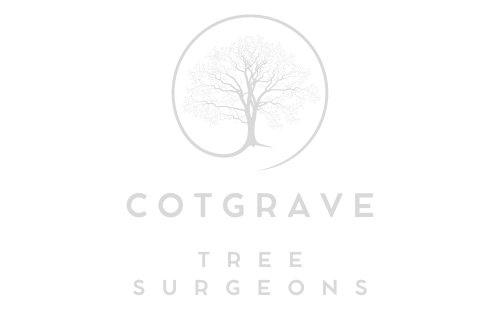Tree Surgery and Wildlife Conservation: A Symbiotic Relationship
Introduction: Tree surgery is often associated with pruning, trimming, and maintaining the health of trees. However, it’s essential to recognise that the benefits of tree surgery extend beyond the trees themselves. When performed with care and consideration, tree surgery can have a profoundly positive impact on wildlife conservation. In this blog post, Cotgrave Tree Surgeons explores the symbiotic relationship between tree surgery and wildlife conservation, highlighting how responsible tree care can create sanctuaries for diverse flora and fauna.
1. Nesting Sites
Trees offer vital nesting sites for numerous bird species. Responsible tree surgery can help preserve existing nests and create suitable cavities for birds to build homes. Tree surgeons can identify active nests and schedule work outside breeding seasons to minimise disturbance.
2. Pruning for Fruit Production
Fruit-bearing trees provide food for humans and support various wildlife species. Pruning and shaping fruit trees can improve fruit production, benefiting wildlife and humans. Birds, insects, and mammals rely on the fruits and blossoms of these trees for sustenance.
3. Deadwood Habitats
Deadwood within trees may appear unsightly, but it is a valuable habitat for many creatures. Beetles, fungi, mosses, and lichens thrive in these environments. Tree surgeons can selectively retain deadwood, promoting biodiversity without compromising tree health or safety.
4. Bat Roosts
Bats are crucial pollinators and play a vital role in pest control. Some tree species, such as oak and beech, are favoured roosting sites for bats. Tree surgeons can identify potential bat roosts and take measures to protect them during tree surgery, ensuring these valuable creatures have a safe place to rest.
5. Sensitive Pruning Techniques
Professional tree surgeons employ techniques like crown reduction, crown lifting, and crown thinning to address tree health and safety concerns while minimising the impact on wildlife. These methods carefully consider the needs of both the tree and its inhabitants.
6. Preservation of Ecological Niches
Mature trees with cavities, hollows, and decaying wood provide unique ecological niches for various species. Tree surgeons can assess the environmental value of a tree and recommend preservation when possible. This approach helps conserve biodiversity and protect habitats.
7. Sustainable Tree Care
Sustainable tree care practices, such as mulching and organic matter incorporation, improve soil health and support the growth of native plants. These practices create a healthier ecosystem, attracting wildlife and benefiting flora and fauna.
Conclusion: Tree surgery and wildlife conservation share a symbiotic relationship that highlights the interconnectedness of the natural world. Responsible tree care not only preserves and enhances the health and safety of trees but also provides critical habitats and resources for wildlife. Cotgrave Tree Surgeons is dedicated to practising environmentally conscious tree surgery that respects the needs of both trees and the diverse array of wildlife that depends on them.
Call us on: 0115 647 1199
Click here to find out more about Cotgrave Tree Surgeons
Click here to complete our contact form and see how we can help with your tree’s needs.

